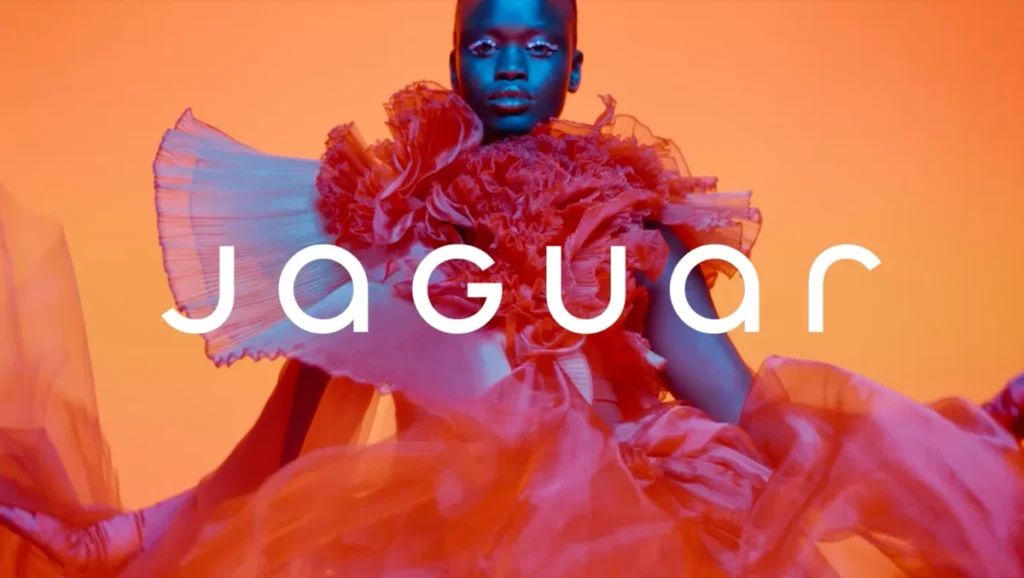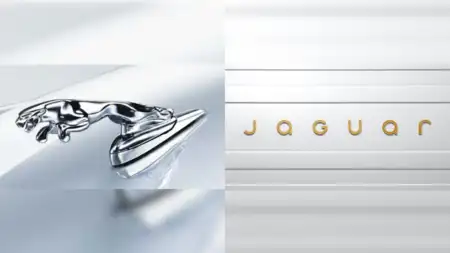Jaguar New Logo: In the ever-evolving world of branding, staying relevant is crucial. Iconic car manufacturer Jaguar has taken a bold step in this direction with a complete rebrand. Its new logo and futuristic promotional campaign aim to attract a younger, tech-savvy audience as the brand shifts focus to an all-electric future. But is this transformation a visionary move or a misstep that alienates loyal fans? Let’s look into the controversy surrounding Jaguar’s new identity.
The Evolution of Jaguar: From Tradition to Transformation
For decades, Jaguar’s leaping cat logo symbolized sophistication, British heritage, and unparalleled luxury. The brand stood tall as a beacon of automotive excellence, blending elegance with performance. However, as industries pivot toward sustainability and innovation, Jaguar decided to redefine itself.
The rebranding replaces the iconic leaping cat with a minimalist design—a sleek wordmark that signifies a new era. The aim? To align with the “Exuberant Modernism” philosophy, a creative approach Jaguar says will underpin its all-electric future.
Read more: Do You Sell Cars? The Controversial Campaign Behind Jaguar’s Rebrand
The Controversial Campaign: “Do You Sell Cars?”
Jaguar’s promotional campaign accompanying the rebrand has sparked significant backlash. Instead of showcasing sleek vehicles, the advertisement features futuristic imagery, abstract visuals, and slogans like “Copy Nothing” and “Break Moulds.” While bold, this strategy left many viewers scratching their heads.
Even Tesla CEO Elon Musk weighed in with a sarcastic tweet: “Do you sell cars?” His comment and a wave of online criticism reflect a shared sentiment—Jaguar might have overlooked its core identity as an automaker.
Key Changes in Jaguar’s Rebranding
| Aspect | Old Branding | New Branding |
| Logo | Leaping cat emblem | Minimalist wordmark |
| Focus | Classic luxury vehicles | Futuristic electric vehicles |
| Campaign Style | Car-centric imagery | Abstract, artistic visuals |
| Philosophy | Timeless elegance | Exuberant Modernism |
Why Did Jaguar Rebrand?
Jaguar’s rebrand is part of a broader strategy to adapt to an electric future. The global push for sustainability has reshaped the automotive industry, and Jaguar aims to compete in this changing landscape. By 2026, the company plans to sell only electric vehicles, targeting environmentally conscious consumers who value modern aesthetics and innovation.

The Problem with the Rebrand
While the intent is admirable, the execution has left many confused. Critics argue that the campaign lacks clarity and alienates Jaguar’s loyal customer base. Here’s why:
1. No Cars in the Ads
The absence of vehicles in Jaguar’s promotional material baffled viewers. For a car company, showcasing products is critical to brand identity.
2. Disconnect from Legacy
Fans of Jaguar’s classic designs feel that the new logo abandons its rich heritage. The leaping cat was more than a symbol; it was an emotion tied to decades of excellence.
3. Unclear Target Audience
The futuristic visuals seem aimed at Gen Z and millennials, but Jaguar’s existing customers, many of whom are older, feel excluded.
Read more: Why Did Jaguar’s New Rebrand Spark So Much Backlash? Let’s Break It Down.
Netizens React: Divided Opinions
The online response to Jaguar’s rebranding has been a mix of humor, criticism, and disappointment. On social media, comments ranged from sarcastic to outright dismissive. Here are some reactions:
– “Whoever approved this ad should rethink their career!”
– “Jaguar was timeless. This feels like a desperate attempt to fit in.”
– “New logo, no cars. Is this even an auto brand anymore?”
Despite the backlash, some netizens praised the bold attempt to break away from traditional advertising norms. For Jaguar, however, the challenge lies in convincing skeptics that this new direction aligns with its vision.

Lessons from Jaguar’s Rebrand
Jaguar’s rebranding teaches valuable lessons about the delicate balance between innovation and tradition:
1. Know Your Audience
A brand’s evolution must resonate with its core customers while appealing to new ones. Jaguar’s rebrand leans heavily toward future buyers, potentially alienating loyalists.
2. Clarity is Key
A promotional campaign must communicate the brand’s purpose effectively. Jaguar’s abstract visuals left many wondering about the connection to cars.
3. Embrace Heritage
While innovation is essential, heritage can be a brand’s greatest strength. Jaguar’s leaping cat symbolized class and sophistication—qualities that shouldn’t be lost.
What Lies Ahead for Jaguar?
The success of Jaguar’s rebrand will depend on its ability to bridge the gap between its storied past and ambitious future. As the automotive world shifts toward electric vehicles, Jaguar has an opportunity to position itself as a pioneer. However, to do so effectively, the brand must address the concerns of its existing audience.
Timeline of Jaguar’s Evolution
| Year | Key Milestone |
| 1935 | Jaguar founded |
| 1945 | Leaping cat logo introduced |
| 2024 | New minimalist logo unveiled |
| 2026 | Transition to all-electric cars |
A Leap of Faith
Jaguar’s rebrand is a bold move that signifies a leap of faith into the future. While the new logo and campaign have divided opinions, they underscore the brand’s commitment to reinvention. Whether this rebranding turns into a marketing case study or a cautionary tale remains to be seen.
You might also like: Delhi’s Air Pollution Crisis 2024: When All Else Fails, Wear a Plant Around Your Neck
For now, Jaguar’s journey is a reminder that evolution is never easy—but often necessary. For more such updates follow our Newscast page.


